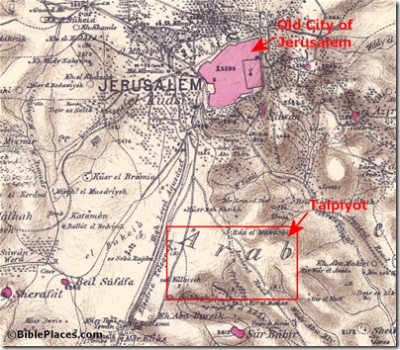I haven’t had time recently to post more about the “tomb of Jesus.” Possibly I’ll be able to in the next few days, though I’ll be traveling most of next week. Instead, see a summary of some recent replies at Denny Burk’s blog. I have added a few names to the list of scholars who think there is something to the theory and those who do not. James Tabor is the only one I’ve seen who suggests that it is worthy of consideration. I think his credibility is taking some big hits on this one.
In the recent barrage, there are a couple of interviews with scholars worthy of posting here.
From Atlanta Journal-Constitution:
Modern architects of fantastic finds try to provide an air of legitimacy by invoking scientific jargon, said Garrett G. Fagan, a classics professor at Penn State University and author of, “Archaeological Fantasies: How Pseudoarchaeology Misrepresents the Past and Misleads the Public” (RoutledgeFalmer, $46.95).
“They’re not scientists, but they need to dress themselves in the clothes of science to pass muster,” Fagan said.
Some choose prestigious channels that style themselves as vehicles for public education, he said.
“Television is not in the business of education, even with the so-called educational channels like Discovery,” Fagan said. “Ultimately, they’re in the business of making money.”
And when critics pounce on the discoveries, Fagan said it’s often too late.
“By the time the rebuttals come out, the mass media would have moved on to the next sensation,” Fagan said, “and people will have this vague notion that they have found the tomb of Jesus.”
Fagan said he expects more fantastic archaeological discoveries to be announced in the near future.
“Someone is going to say they’ve discovered Moses’ beard,” he said.
From the Washington Post:
Jodi Magness, an archaeologist at the University of North Carolina at Chapel Hill, expressed irritation that the claims were made at a news conference rather than in a peer-reviewed scientific article. By going directly to the media, she said, the filmmakers “have set it up as if it’s a legitimate academic debate, when the vast majority of scholars who specialize in archaeology of this period have flatly rejected this,” she said.
Magness noted that at the time of Jesus, wealthy families buried their dead in tombs cut by hand from solid rock, putting the bones in niches in the walls and then, later, transferring them to ossuaries.
She said Jesus came from a poor family that, like most Jews of the time, probably buried their dead in ordinary graves. “If Jesus’ family had been wealthy enough to afford a rock-cut tomb, it would have been in Nazareth, not Jerusalem,” she said.
Magness also said the names on the Talpiyot ossuaries indicate that the tomb belonged to a family from Judea, the area around Jerusalem, where people were known by their first name and father’s name. As Galileans, Jesus and his family members would have used their first name and home town, she said.
“This whole case (for the tomb of Jesus) is flawed from beginning to end,” she said.
I think there are some significant problems with the theory in the statistical analysis, but it will probably be some time before a qualified expert has time to prepare and present a rebuttal. And, as Fagan notes above, by then, the media will have moved on. (In the meantime, see Mark Goodacre.)
